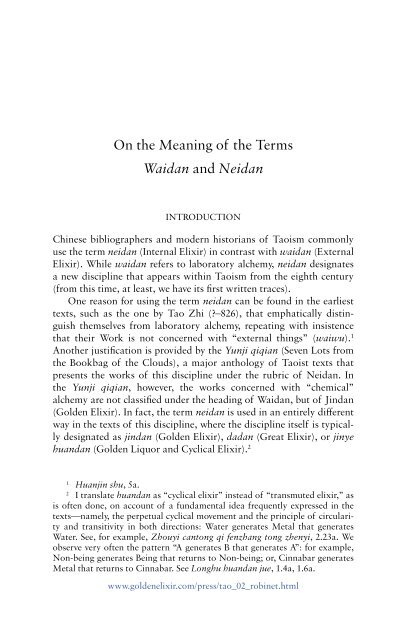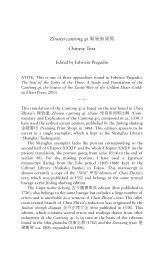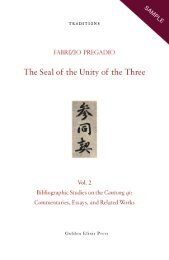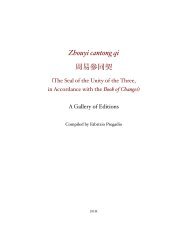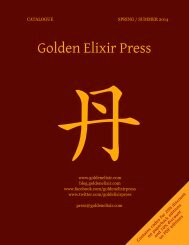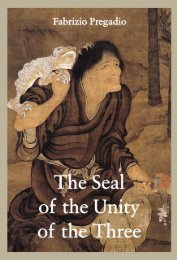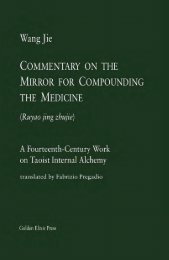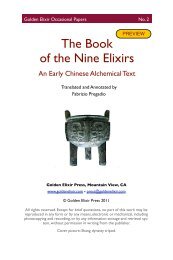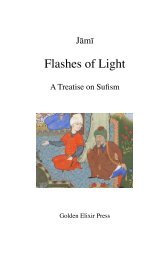Robinet, The World Upside Down: Essays on ... - The Golden Elixir
Robinet, The World Upside Down: Essays on ... - The Golden Elixir
Robinet, The World Upside Down: Essays on ... - The Golden Elixir
- No tags were found...
You also want an ePaper? Increase the reach of your titles
YUMPU automatically turns print PDFs into web optimized ePapers that Google loves.
On the Meaning of the TermsWaidan and NeidanINTRODUCTIONChinese bibliographers and modern historians of Taoism comm<strong>on</strong>lyuse the term neidan (Internal <strong>Elixir</strong>) in c<strong>on</strong>trast with waidan (External<strong>Elixir</strong>). While waidan refers to laboratory alchemy, neidan designatesa new discipline that appears within Taoism from the eighth century(from this time, at least, we have its first written traces).One reas<strong>on</strong> for using the term neidan can be found in the earliesttexts, such as the <strong>on</strong>e by Tao Zhi (?–826), that emphatically distinguishthemselves from laboratory alchemy, repeating with insistencethat their Work is not c<strong>on</strong>cerned with “external things” (waiwu). 1Another justificati<strong>on</strong> is provided by the Yunji qiqian (Seven Lots fromthe Bookbag of the Clouds), a major anthology of Taoist texts thatpresents the works of this discipline under the rubric of Neidan. Inthe Yunji qiqian, however, the works c<strong>on</strong>cerned with “chemical”alchemy are not classified under the heading of Waidan, but of Jindan(<strong>Golden</strong> <strong>Elixir</strong>). In fact, the term neidan is used in an entirely differentway in the texts of this discipline, where the discipline itself is typicallydesignated as jindan (<strong>Golden</strong> <strong>Elixir</strong>), dadan (Great <strong>Elixir</strong>), or jinyehuandan (<strong>Golden</strong> Liquor and Cyclical <strong>Elixir</strong>). 21Huanjin shu, 5a.2I translate huandan as “cyclical elixir” instead of “transmuted elixir,” asis often d<strong>on</strong>e, <strong>on</strong> account of a fundamental idea frequently expressed in thetexts—namely, the perpetual cyclical movement and the principle of circularityand transitivity in both directi<strong>on</strong>s: Water generates Metal that generatesWater. See, for example, Zhouyi cant<strong>on</strong>g qi fenzhang t<strong>on</strong>g zhenyi, 2.23a. Weobserve very often the pattern “A generates B that generates A”: for example,N<strong>on</strong>-being generates Being that returns to N<strong>on</strong>-being; or, Cinnabar generatesMetal that returns to Cinnabar. See L<strong>on</strong>ghu huandan jue, 1.4a, 1.6a.www.goldenelixir.com/press/tao_02_robinet.html


